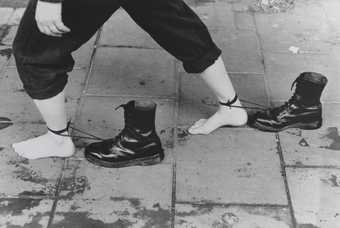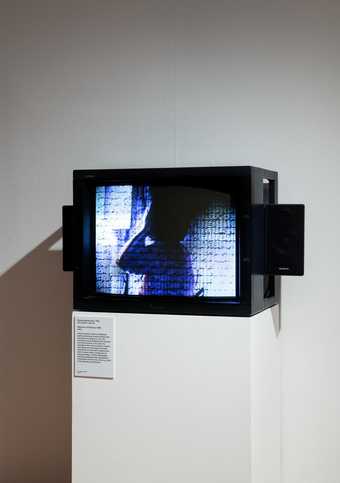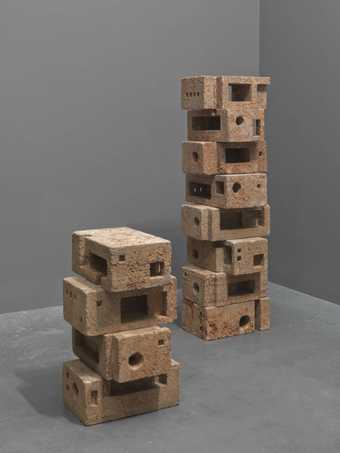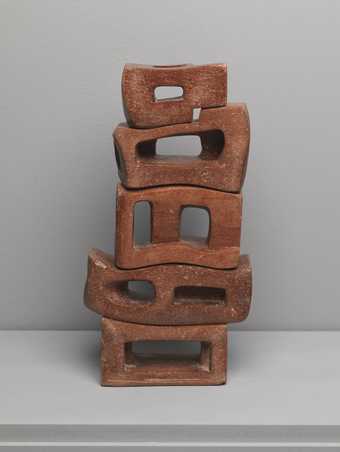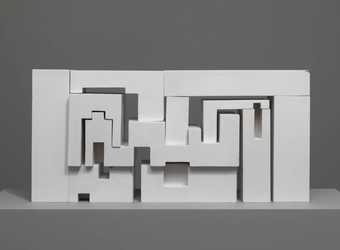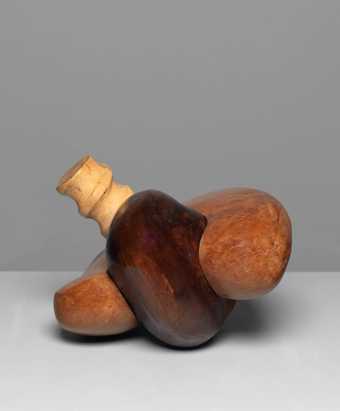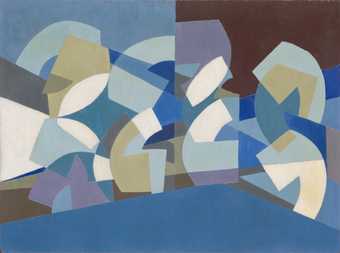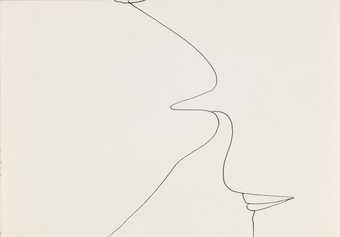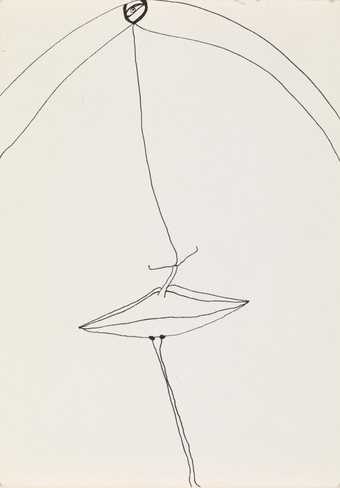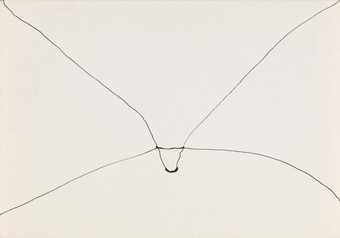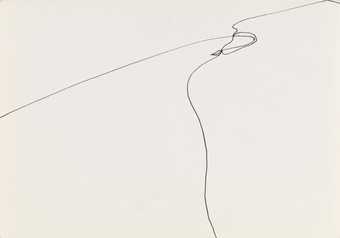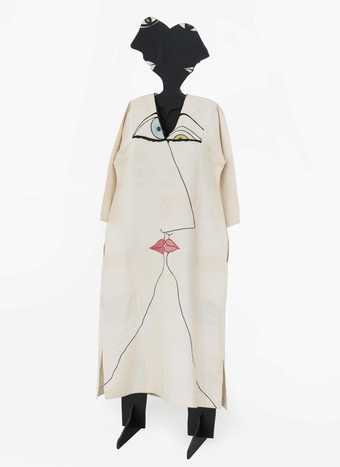In Tate St Ives
- Artist
- Saloua Raouda Choucair 1916–2017
- Medium
- Aluminium
- Dimensions
- Object: 270 × 210 × 70 mm
- Collection
- Tate
- Acquisition
- Purchased with funds provided by the Middle East North Africa Acquisitions Committee 2012
- Reference
- T13647
Summary
Poem of Nine Verses 1966–8 comprises nine different aluminium forms placed on top of one another to create a vertical sculpture. Its configuration recalls many of Choucair’s earlier works including Infinite Structure 1963–5 (Tate T13262). Each of the forms is of a basic rectangular shape, with soft organic curves that interlock in places rather than sitting squarely on top of one another. As the title suggests, each form is likened to a verse in a poem. The work was produced in Beirut in the artist’s studio by carving a wooden version that was then cast in aluminium.
Choucair began producing what she called sculptural ‘poems’ in the early 1960s; other examples include Poem 1963–5 (Tate T13278) and Poem Wall 1965–6 (Tate T13279). The artist studied in Paris between 1948 and 1952 and the influence of artists such as Fernand Léger (1881–1955), whose studio she attended for a period, is marked in the abstract nature of her work. Her interpretation of western abstraction, however, is complicated by her study of Islamic aesthetics, as is evident in Poem of Nine Verses. This, and her other ‘poem’ works, all use the motif of interlocking forms. Her interest in such forms emerged from her concern with her religion, Sufism, and in particular its related poetry, in which individual parts are recognised as having their own identity while contributing to the identity of the whole. She has stated: ‘The way I organised my sculptural poems for example, was inspired by Arabic poetry. I wanted rhythm like the poetic meter, to be at once more independent and interlinked, and to have lines like meanings.’ (Quoted in Mulhaq al-Nahar, 23 September 1995, p.10.)
As with earlier ‘poem’ sculptures, it is important that each individual section, or ‘verse’, of the structure is able to function as a unique sculptural form and that the individual units can be rearranged in different formations. The potential for interaction and movement within the work resonates with the work of other artists including Lygia Clark (1920–1988), whose ‘Bichos’ were similarly kinetic. Choucair’s work, however, differs due to the inherent structure among its parts and its relationship to Islamic poetry, as opposed to the organic notions of mutability which interested Clark. The sculpture’s organic, abstract forms also recall the work of Barbara Hepworth (1903–1975), though once again the specific poetic and religious references in Choucair’s work set it apart from this Western lineage.
Further reading
Joseph Tarrab, Hala Schoukair, Helen Kahl, Saloua Raouda Choucair: Her Life and Work, Beirut 2002.
Chris Dercon, Leon Krempel and Avinoam Shalem (eds.), The Future of Tradition – The Tradition of Future: 100 Years After the Exhibition ‘Masterpieces of Muhammadan Art in Munich’, exhibition catalogue, Haus der Kunst, Munich 2010, reproduced p.45.
Kyla McDonald
August 2011
Does this text contain inaccurate information or language that you feel we should improve or change? We would like to hear from you.
Explore
- abstraction(8,615)
-
- non-representational(6,161)
-
- geometric(3,072)
- formal qualities(12,454)
-
- rhythm(101)
- religions(181)
- lifestyle and culture(10,247)
-
- cultural identity(7,943)
- poetry(85)
You might like
-
Mona Hatoum Performance Still
1985, 1995 -
Mona Hatoum Measures of Distance
1988 -
Saloua Raouda Choucair Infinite Structure
1963–5 -
Saloua Raouda Choucair Poem
1963–5 -
Saloua Raouda Choucair Poem Wall
1963–5 -
Saloua Raouda Choucair The Screw
1975–7 -
Saloua Raouda Choucair Composition in Blue Module
1947–51 -
Saloua Raouda Choucair Composition with Two Ovals
1951 -
Huguette Caland Flirt I
1972 -
Huguette Caland Flirt III
1972 -
Huguette Caland Flirt VI
1972 -
Huguette Caland Flirt VIII
1972 -
Huguette Caland Flirt IX
1972 -
Huguette Caland Flirt X
1972 -
Huguette Caland Face to Face
1971


